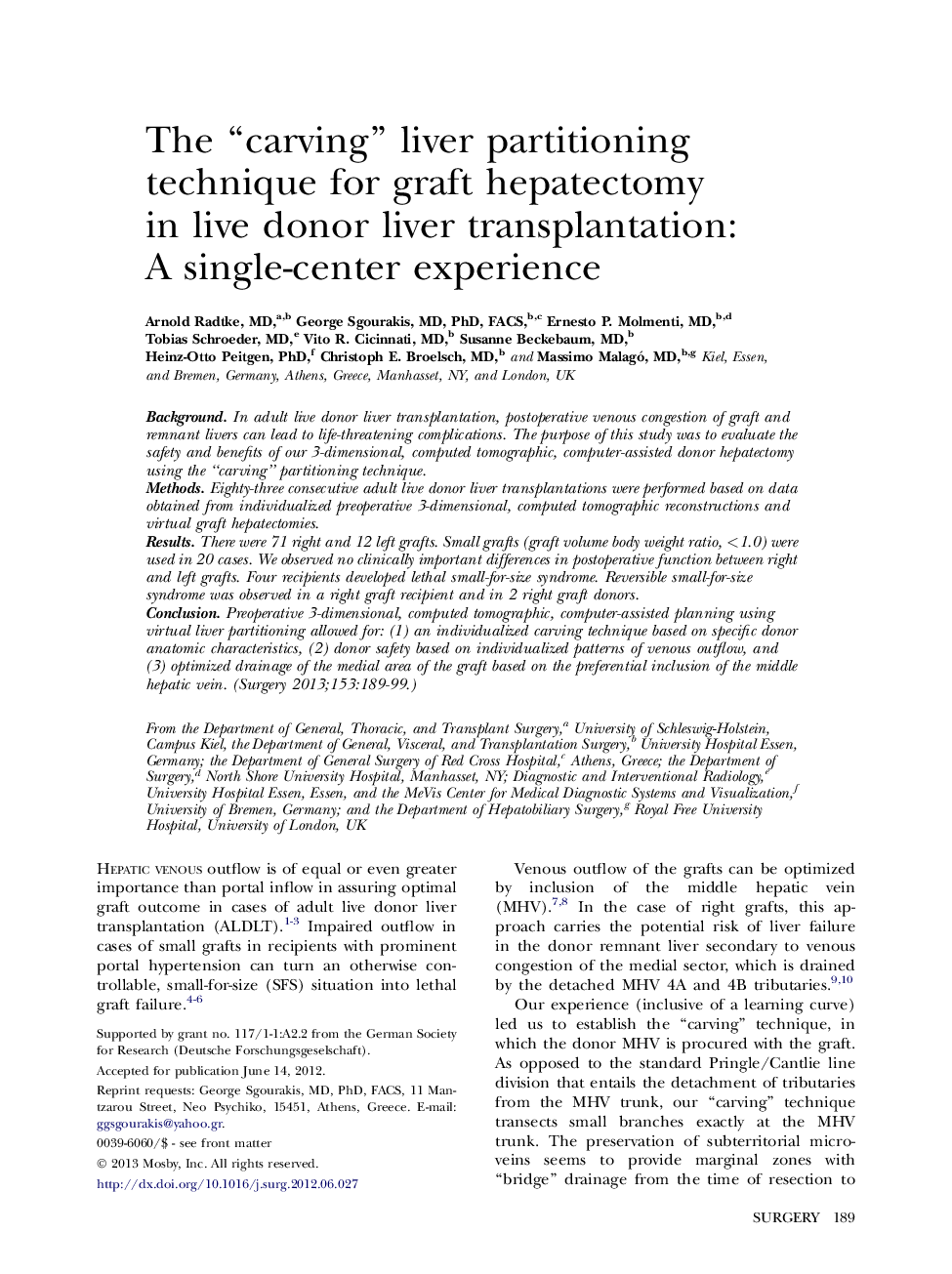| Article ID | Journal | Published Year | Pages | File Type |
|---|---|---|---|---|
| 6255744 | Surgery | 2013 | 11 Pages |
BackgroundIn adult live donor liver transplantation, postoperative venous congestion of graft and remnant livers can lead to life-threatening complications. The purpose of this study was to evaluate the safety and benefits of our 3-dimensional, computed tomographic, computer-assisted donor hepatectomy using the “carving” partitioning technique.MethodsEighty-three consecutive adult live donor liver transplantations were performed based on data obtained from individualized preoperative 3-dimensional, computed tomographic reconstructions and virtual graft hepatectomies.ResultsThere were 71 right and 12 left grafts. Small grafts (graft volume body weight ratio, <1.0) were used in 20 cases. We observed no clinically important differences in postoperative function between right and left grafts. Four recipients developed lethal small-for-size syndrome. Reversible small-for-size syndrome was observed in a right graft recipient and in 2 right graft donors.ConclusionPreoperative 3-dimensional, computed tomographic, computer-assisted planning using virtual liver partitioning allowed for: (1) an individualized carving technique based on specific donor anatomic characteristics, (2) donor safety based on individualized patterns of venous outflow, and (3)Â optimized drainage of the medial area of the graft based on the preferential inclusion of the middle hepatic vein.
